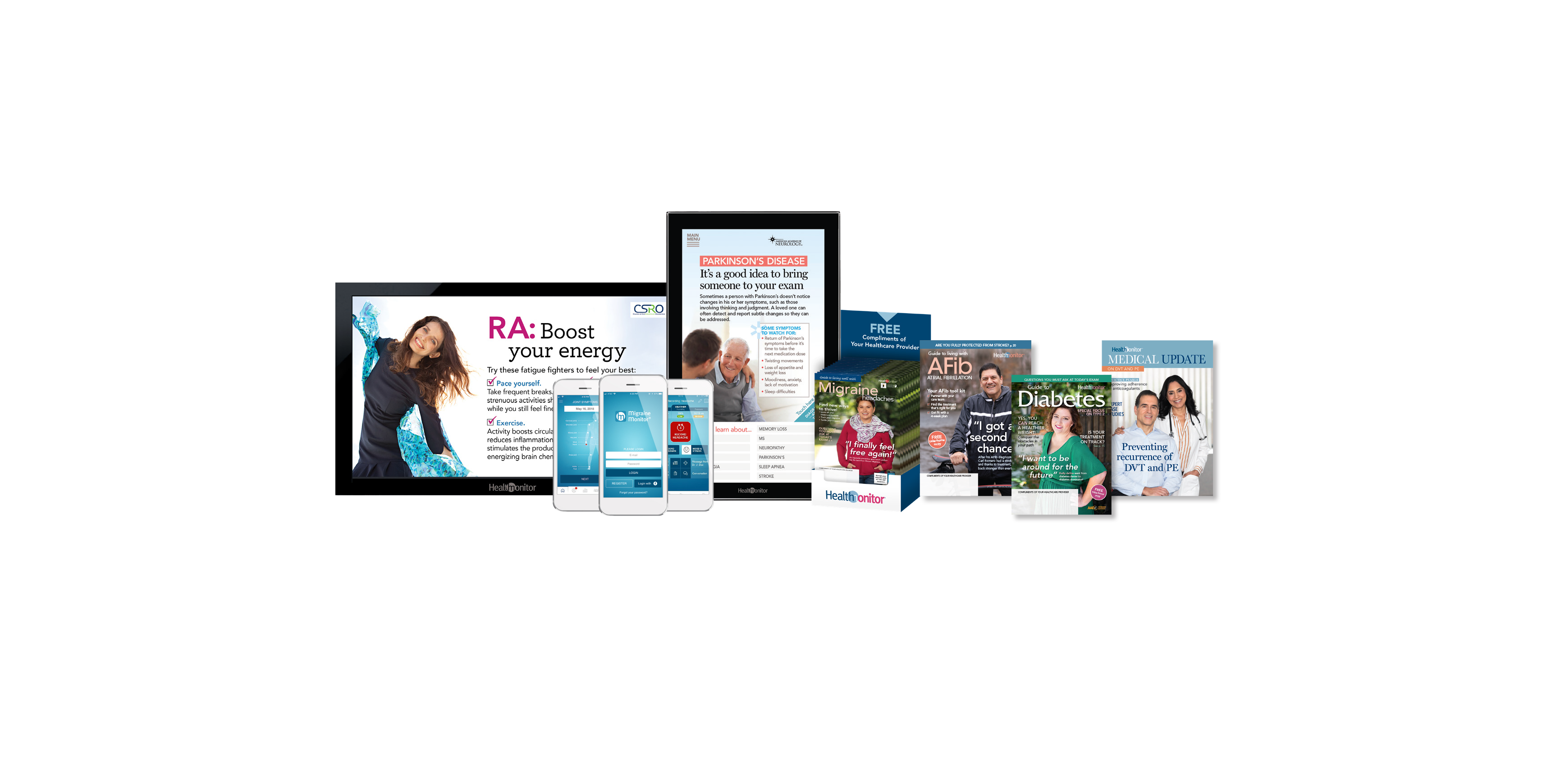Achieving a Point-of-Care Advertising Balancing Act

Point-of-care (POC) advertising is rapidly growing as an effective, innovative, and vital segment of healthcare marketing. It provides pharma companies with a valuable platform for their brands and offers their agencies a dynamic promotional tool to maximize the marketing mix when attempting to reach their targeted audiences. POC content is designed to educate patients regarding treatment options, drive patient/physician engagement, improve adherence, and, ultimately, enhance health outcomes.
As POC advertising grows in importance, marketers are continuously working to determine the best media mix. Healthcare-related POC spend is expected to come in at $571 million for 2019 and could approach $900 million by 2022 and $1 billion by 2025, according to data presented at the Point of Care Communications Council's annual PoC3 Summit by management consultancy ZS associate principal Victoria Summers.
In the future, chief executive officers and chief information officers, as well as chief marketing officers and other marketing and advertising functions, will be demanding more efficacious POC measurement practices to gauge ROI. As the role of POC increases and the mix becomes more complex, marketers are faced with a complicated balancing act. A key challenge with POC is determining the appropriate media channel to reach the right patient, in the right place, and at the right time.
The emergence of digital communication channels has revolutionized the way POC is implemented; however, a significant portion of patients still prefer the delivery of health and wellness educational materials in print formats.
Printed educational guides provided at the POC for patients can help physicians, physician's assistants, nurses, and nurse practitioners achieve their patient care objectives. These professionally designed, targeted educational guides strengthen relationships with patients by allowing advertisers to deliver their condition-specific brand message to targeted HCP offices. The guides can contain vital treatment and diagnosis information, including signs and symptoms to look for, patient communication strategies, recent medical news, clinical research findings, and more.
Case in point: a couple dealing with a devastating intestinal diagnosis might prefer to post a printed article at home on their refrigerator as a visual reminder and easily accessible reference. Targeted print also offers marketers the options to include business reply cards, coupons, a survey, and any other takeaway collateral for vital products associated with a recent diagnosis. And, for those who are prone to researching their conditions, print offers an in-depth approach — with take-home value that can generate lasting brand impressions and extended stickiness, while impacting treatment choices and increasing audience reach.
POC Channel Options
There are several options for POC education and patient engagement:
Digital exam-room posters– Digital screens that silently rotate informational panels, featuring key-opinion-leader approved, condition-specific content are prominently and professionally installed in waiting rooms and exam rooms. They are designed for minimal direct interactivity while creating a visible and organic environment for pharmaceutical companies to feature their brand just prior to a patient meeting with their healthcare professional (HCP). This patient-education tool is designed to facilitate an effective dialogue between patients and their providers.
Printed disease education guides and magazines – Each disease guide offers marketers the valuable opportunity to bring a brand's message to highly qualified condition sufferers. Print magazines are designed to facilitate the interchange between patients and their HCPs, offering advertisers mass reach, as well as the ability to target patients and specialty offices.
Mobile apps– Apps offer customized, 24/7 accessible content to educate patients via tablet or smartphone regarding specific disease states. They represent the future of health media innovation and untapped opportunity for brand promotion through patient engagement.
Static printed exam-room posters– Posters provide healthcare marketers with an exclusive opportunity to own valuable real estate at the point of care. Studies have shown that most healthcare professionals who receive POC posters use them as a communication aid with their patients.
Evaluating Alternatives
When assessing various POC options, it is helpful to look at the benefits of each tool, as well as the makeup of the HCP group and patient population. While demographics and disease states play important roles when considering the best marketing and education channels to use, a mix of traditional and digital communications is highly recommended.
POC best practices reveal that a multichannel strategy is the best approach, appealing to a diverse patient set. It is especially important to understand that many patients and caregivers approach diseases from different literacy perspectives. Along with being linked to a higher incidence of chronic illness, lost wages, a lesser quality of life, and a shorter life expectancy, health illiteracy exacts a financial toll; estimates range from $106 to $236 billion a year, according to a report by the American Public Health Association.
In addition to literacy considerations, POC marketers should contemplate learning styles and preferences. No matter the caliber of patient-education material, whether print or digital, written or graphic, static or animated, it succeeds only if it caters to a person's preferred learning style. A perceived informational partnership between a brand and a provider yields a media synthesis that fits the disease, takes patient literacy into account, recognizes varied learning styles, and is accessible via various media channels, including online and digital.
Best practices demand an approach that fosters the convergence of digital andprint. This methodology considers individual preferences, circumstances, and needs, which unquestionably includes print materials. Brands need to take a comprehensive approach to support healthcare providers in delivering effective patient engagement content and education, as well as to reach optimal ROI.
Photo courtesy of Health Monitor Network
Click the social buttons to share this story with your friends and colleagues.
The opinions and points of view expressed in this content are exclusively the views of the author and/or subject(s) and do not necessarily represent the views of MediaVillage.com/MyersBizNet, Inc. management or associated writers.


